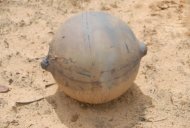New Year's Eve Time Balls
This evening, thousands of spectators in New York City's Times Square will view the New Year's Eve Time Ball drop to mark the beginning of the year 2012, with millions of other people viewing the event on television. In Pittsburgh, to be a little different, the Time Ball above the Christmas Tree mounted on the corner of the former Joseph Horne Company Department Store will move up to the top of a pole to mark the beginning of the new year.
Historically, time balls were used daily, in coastal cities, to provide a standard time for ship captains to set their clocks from their ships, as a way for these sailors to keep precise time and to determine their longitude at sea.
MORE ABOUT THE HISTORY OF TIME BALLS: http://en.wikipedia.org/wiki/Time_ball
MORE ABOUT THE TIMES SQUARE TIME BALL: http://en.wikipedia.org/wiki/Times_Square_Ball
gaw
Glenn A. Walsh, Project Director,
Friends of the Zeiss < http://friendsofthezeiss.org >
Electronic Mail - < gawalsh@planetarium.cc >
SPACE & SCIENCE NEWS, ASTRONOMICAL CALENDAR:
< http://buhlplanetarium.tripod.
Twitter: < http://twitter.com/
Facebook: < http://www.facebook.com/pages/
Blog: < http://spacewatchtower.
Author of History Web Sites on the Internet --
* Buhl Planetarium, Pittsburgh:
< http://www.planetarium.
* Adler Planetarium, Chicago:
< http://adlerplanetarium.
* Astronomer, Educator, Optician John A. Brashear:
< http://johnbrashear.tripod.com >
* Andrew Carnegie & Carnegie Libraries:
< http://www.andrewcarnegie.
* Civil War Museum of Andrew Carnegie Free Library:
< http://garespypost.tripod.com >
* Duquesne Incline cable-car railway, Pittsburgh:
< http://inclinedplane.tripod.
* Public Transit:
< http://andrewcarnegie2.tripod.






















